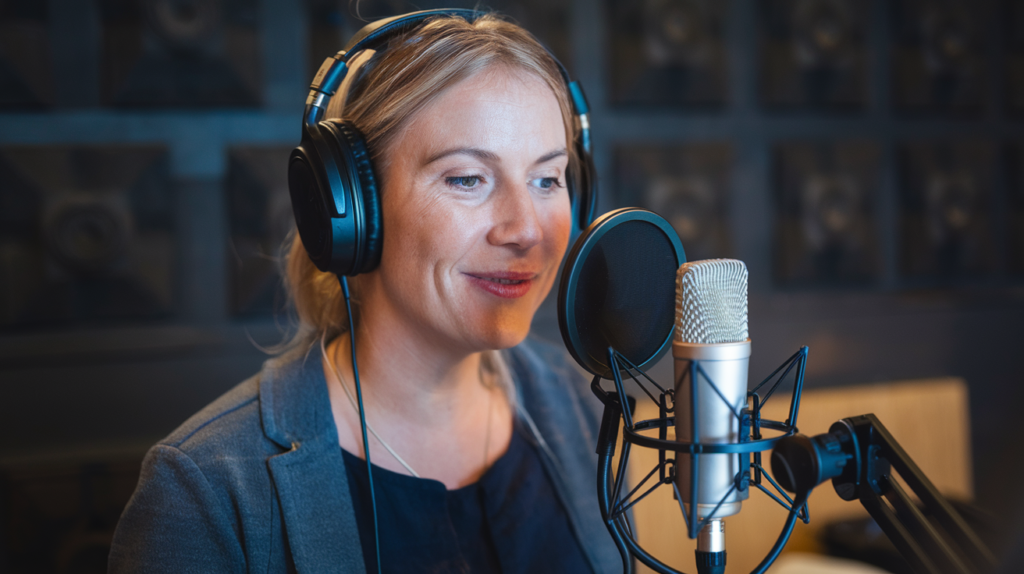Key Takeaways
- Cultural Significance: Te Reo Māori is integral to New Zealand’s identity, serving as a vessel for history, traditions, and cultural practices.
- Historical Resilience: The language has survived colonization pressures that marginalized it, reflecting the resilience of the Māori people throughout history.
- Revitalization Efforts: Since the late 20th century, community-led initiatives like kōhanga reo have successfully revived interest and fluency in Te Reo among younger generations.
- Modern Usage Trends: Approximately 21% of the Māori population speaks Te Reo fluently today, with increasing engagement from youth through educational programs and cultural activities.
- Government Support: The New Zealand government actively promotes bilingual education and provides funding for resources that enhance the visibility and use of Te Reo across society.
- Community Engagement: Grassroots efforts are vital for preserving Te Reo, fostering environments where language learning thrives within everyday life.
Have you ever wondered how the Māori language shaped New Zealand’s rich cultural landscape? The history of the Māori language is a fascinating journey through time, reflecting resilience and revival. Once on the brink of extinction, this beautiful language has experienced a remarkable resurgence that’s deeply intertwined with New Zealand’s identity.
Overview of Maori Language
Māori language, known as Te Reo Māori, plays a crucial role in New Zealand’s identity and cultural heritage. Understanding its definition and significance provides insight into its importance in contemporary society.
Definition and Significance
Te Reo Māori is an Eastern Polynesian language spoken by the Māori people of New Zealand. It serves as a key component of their cultural identity and practices. The revival efforts since the late 20th century highlight its significance; it’s not just a means of communication but also a vessel for history, traditions, and values. This resurgence has fostered pride among Māori communities, ensuring that younger generations embrace their linguistic heritage.
Geographic and Cultural Context
Māori language is primarily spoken throughout New Zealand, with concentrations in areas such as Auckland and the Waikato region. Its geographical spread reflects the historical migration patterns of the Māori people across the islands. Culturally, Te Reo connects various aspects of daily life, including art, music, storytelling, and customs. Events like Matariki (the Māori New Year) celebrate this connection to language while promoting community engagement. As you explore these elements further, you’ll see how intimately linked Te Reo is to New Zealand’s broader national narrative.
Historical Timeline of Maori Language
The history of the Māori language is rich and complex, reflecting the journey of the Māori people in New Zealand. This timeline highlights key events that shaped Te Reo Māori from its origins to its revitalization.
Pre-Colonial Era
The Māori language emerged with the arrival of Polynesian settlers in New Zealand around 1250 AD. As these groups settled across the islands, they developed a distinct dialect influenced by their environment and experiences. Oral traditions flourished, preserving stories, genealogies, and cultural practices through generations. The use of Te Reo was central to everyday life, connecting communities and reinforcing social structures.
Colonial Impact on Language
Colonization marked a significant turning point for Te Reo Māori. European settlers arrived in the early 19th century, leading to shifts in power dynamics as English became dominant. Missionaries initially supported literacy efforts but often imposed English education systems that marginalized the native language. By the mid-20th century, government policies actively suppressed Te Reo, resulting in declining fluency among younger generations.
Language Revitalization Movements
The late 20th century witnessed a resurgence in interest surrounding Te Reo Māori as cultural pride grew within communities. Initiatives such as kōhanga reo (language nests) emerged to immerse children in their heritage from an early age. In 1987, recognition of Te Reo as an official language catalyzed further support and funding for educational programs aimed at revitalizing it. Today, you’ll find numerous resources—such as classes and media broadcasts—that promote daily use of Te Reo across New Zealand’s diverse population.
This timeline illustrates not only the resilience of Te Reo but also its vital role in shaping contemporary New Zealand identity—a testament to its enduring legacy amidst challenges faced over centuries.
Key Influences on Maori Language Development
Māori language development in New Zealand has faced numerous influences that shaped its current state. Understanding these influences provides insight into Te Reo Māori’s resilience and significance today.
Impact of British Colonization
British colonization significantly impacted the Māori language, especially during the 19th century. As English became dominant, government policies marginalized Te Reo Māori, leading to a decline in fluency among speakers. Schools enforced English as the primary medium of instruction, further suppressing the use of Māori in everyday life. This period marked a critical challenge for Te Reo, as many cultural practices linked to the language diminished under colonial pressures.
Role of Education and Media
Education and media play crucial roles in revitalizing Te Reo Māori. Initiatives like kōhanga reo (language nests) provide immersive environments where children learn through speaking and engaging with native speakers. Educational resources have expanded significantly since Te Reo was declared an official language in 1987, fostering pride among younger generations.
Media representation also contributes to this revival. Radio stations broadcast programs entirely in Māori, while television offers content that celebrates cultural narratives and promotes language use. The digital age has opened new avenues for learning through apps and online platforms, making it easier than ever to access resources dedicated to preserving Te Reo.
These influences highlight how external factors can shape linguistic landscapes while demonstrating the importance of community-driven efforts in keeping languages alive for future generations.
Modern-Day Status of Maori Language
The Māori language, Te Reo Māori, experiences a renaissance in contemporary New Zealand. Increasingly, you see efforts to integrate it into everyday life, education systems, and media platforms.
Current Usage Statistics
Recent statistics indicate that approximately 21% of the Māori population speaks Te Reo fluently. This figure reflects a steady rise from previous decades, showcasing successful revitalization efforts. In urban areas like Auckland, this percentage increases significantly due to concentrated community initiatives. Notably, around 34% of Māori youth engage with the language daily or weekly through various channels such as school programs and cultural events.
Government Initiatives and Support
The New Zealand government plays a crucial role in supporting the use of Te Reo Māori through various initiatives. Policies promote bilingual education models within schools to facilitate language acquisition among younger generations. Additionally, funding for community-based programs enhances access to resources promoting Te Reo’s usage in daily conversations and cultural activities. The establishment of dedicated broadcasting channels increases visibility for the language across digital platforms and traditional media outlets, further embedding Te Reo into New Zealand’s social fabric.
These concerted efforts contribute to fostering an environment where speaking Te Reo is not just encouraged but celebrated across diverse sectors of society.
Challenges Facing Maori Language
Maintaining the vitality of Te Reo Māori presents several challenges. Understanding these obstacles is crucial for fostering a sustainable future for the language.
Language Endangerment Factors
Language endangerment factors primarily stem from historical and ongoing influences. Colonization led to English dominance, pushing Te Reo into the background. Educational policies historically favored English over Māori, contributing to a decline in fluency among younger generations. Additionally, urban migration has fragmented traditional language use, as many Māori now live in cities where English prevails in daily interactions. The absence of immersive environments also limits opportunities for learning and practicing Te Reo outside formal education settings.
Community Efforts to Preserve the Language
Community efforts play a pivotal role in revitalizing Te Reo Māori. Initiatives like kōhanga reo provide culturally immersive environments that encourage language use from an early age. Schools increasingly incorporate bilingual education programs, allowing children to learn both languages simultaneously while fostering pride in their heritage. Local organizations often host events celebrating Te Reo through music, art, and storytelling, further engaging the community and promoting its everyday use. These grassroots movements are vital for maintaining the relevance of the language within contemporary society and ensuring it continues to thrive across generations.
Conclusion
The journey of Te Reo Māori reflects the resilience and spirit of the Māori people. As you witness its revival in modern New Zealand, you’ll see a vibrant culture reawakening through language. The commitment to education and community initiatives plays a crucial role in fostering pride among younger generations.
Embracing Te Reo isn’t just about preserving history; it’s about celebrating identity and connection. You can engage with this rich linguistic heritage by participating in local events or exploring educational resources. Together, we can ensure that Te Reo Māori thrives for years to come, enriching New Zealand’s cultural tapestry and enhancing your understanding of its unique narrative.
Frequently Asked Questions
What is Te Reo Māori?
Te Reo Māori is the Eastern Polynesian language of the Māori people, integral to their cultural identity and practices in New Zealand. It reflects their history, traditions, and values, playing a crucial role in community engagement.
Why was there a decline in the use of Te Reo Māori?
The decline in Te Reo’s usage was largely due to British colonization and government policies prioritizing English. These factors marginalized the language, affecting its prevalence in education and daily life throughout the 19th century.
How has Te Reo Māori been revived in recent years?
Since its official recognition as a language in 1987, various initiatives like kōhanga reo (language nests) have emerged to promote Te Reo. Educational resources and media representation have also increased, fostering pride among communities.
Where is Te Reo Māori primarily spoken today?
Te Reo Māori is mainly spoken throughout New Zealand, especially in urban areas such as Auckland and regions like Waikato. Its geographical spread reflects historical migration patterns of the Māori people.
What challenges does Te Reo Māori face today?
Te Reo faces challenges from ongoing English dominance and urban migration that limit immersive learning environments. The lack of opportunities for practicing outside formal settings poses risks to its vitality among younger generations.
How can community efforts help preserve Te Reo Māori?
Community-driven initiatives are vital for preserving Te Reo. Events celebrating music, art, storytelling, and bilingual education programs engage locals while promoting everyday use of the language across various sectors of society.







